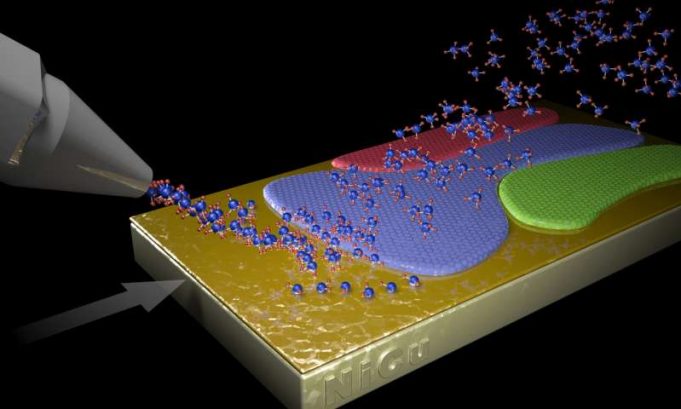A new method to produce large, monolayer single-crystal-like graphene films more than a foot long relies on harnessing a "survival of the fittest" competition among crystals. The novel technique, developed by a team led by the Department of Energy's...
Rice University engineers have zeroed in on the optimal architecture for storing hydrogen in "white graphene" nanomaterials—a design like a Lilliputian skyscraper with "floors" of boron nitride sitting one atop another and held precisely 5.2 angstroms apart by boron...
A research team led by UCLA scientists and engineers has developed a method to make new kinds of artificial "superlattices"—materials comprised of alternating layers of ultra-thin "two-dimensional" sheets, which are only one or a few atoms thick. Unlike current...
Joining different kinds of materials can lead to all kinds of breakthroughs. It's an essential skill that allowed humans to make everything from skyscrapers (by reinforcing concrete with steel) to solar cells (by layering materials to herd electrons).
In electronics,...
Electrons in graphene—an atomically thin, flexible and incredibly strong substance that has captured the imagination of materials scientists and physicists alike—move at the speed of light, and behave like they have no mass. Now, scientists at Washington University in...
It's hard to believe that a single material can be described by as many superlatives as graphene can. Since its discovery in 2004, scientists have found that the lacy, honeycomb-like sheet of carbon atoms - essentially the most microscopic...
The first direct comparison of in vitro and in vivo screening techniques for identifying nanoparticles that may be used to transport therapeutic molecules into cells shows that testing in lab dishes isn't much help in predicting which nanoparticles will...
For the first time, researchers isolated and characterized atomically thin 2-D crystals of pentagons bonded together in palladium diselenide (PdSe2). The research confirmed predictions that the puckered structure would be stable.
The unique structure of the material results in beneficial...
A basic building block of modern technology, inductors are everywhere: cellphones, laptops, radios, televisions, cars. And surprisingly, they are essentially the same today as in 1831, when they were first created by English scientist Michael Faraday.
The particularly large size...
Computer algorithms might be performing brain-like functions, such as facial recognition and language translation, but the computers themselves have yet to operate like brains.
"Computers have separate processing and memory storage units, whereas the brain uses neurons to perform both...
Researchers at Queen Mary University of London have discovered that cells can 'walk' on liquids a bit like the way geckos stick to other surfaces.
Cells are typically grown on solid materials, such as tissue culture plastic, degradable polymers and...


















